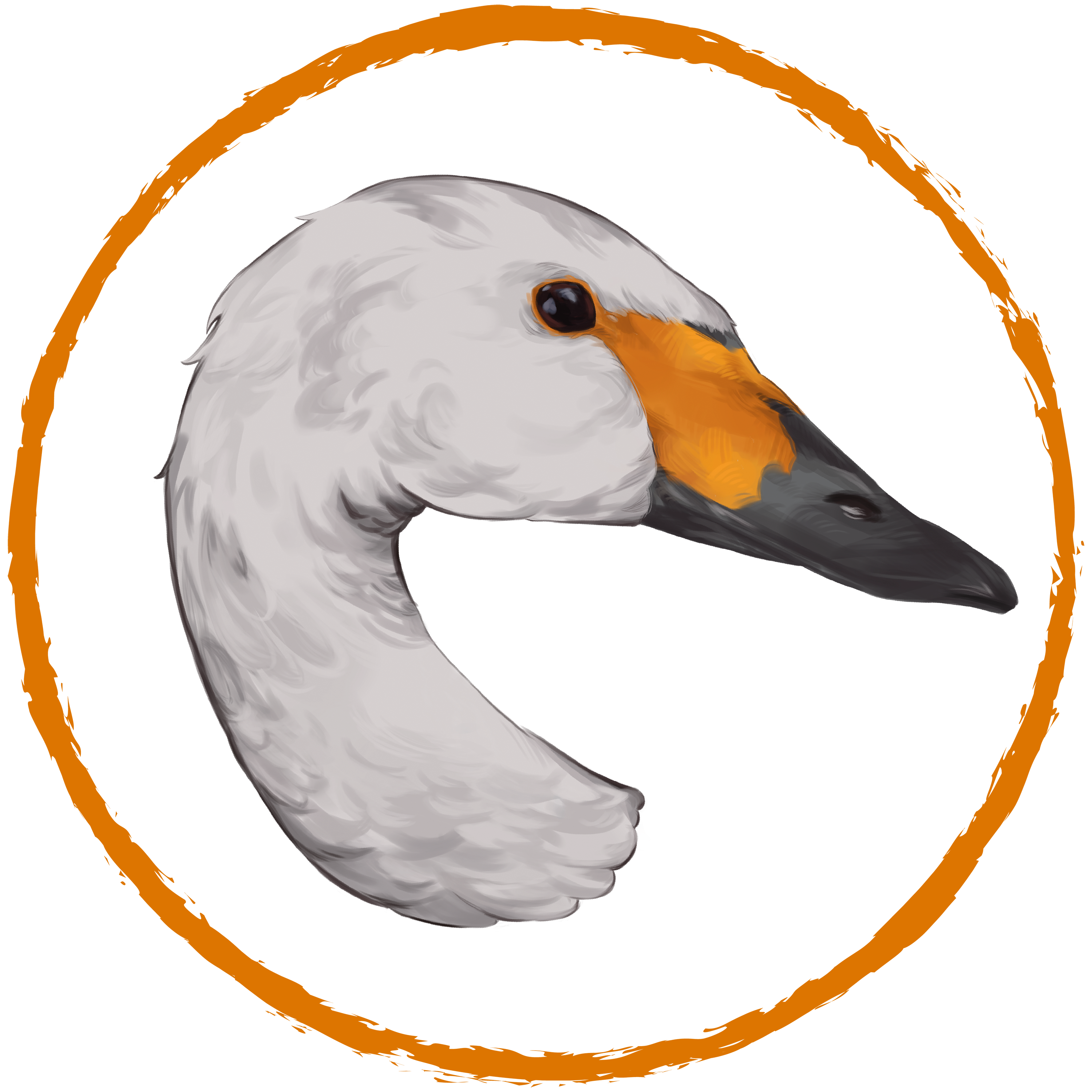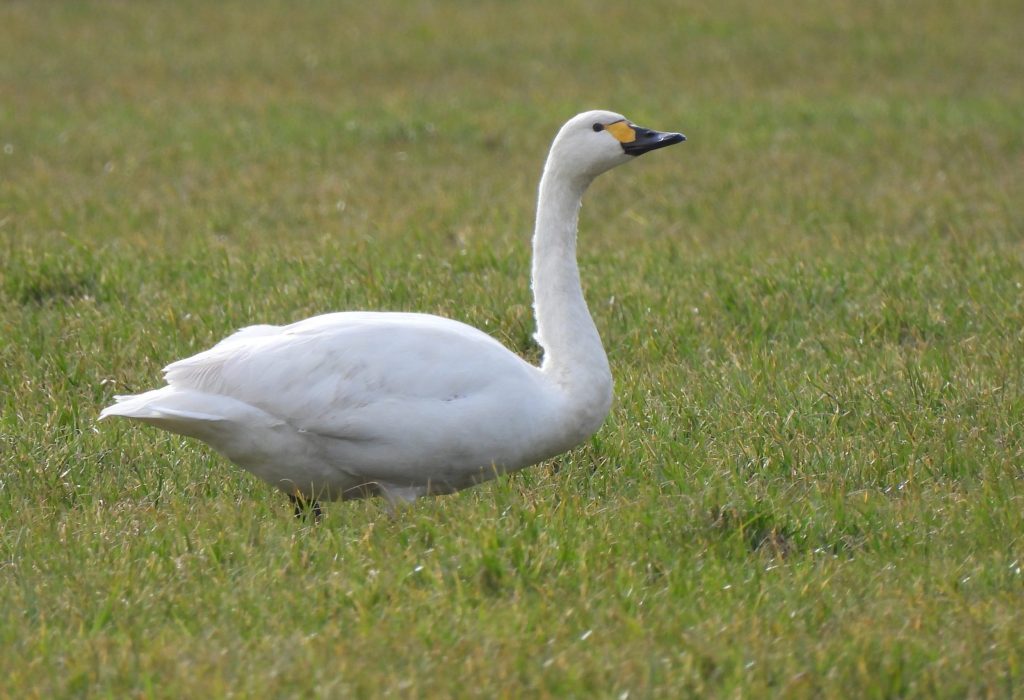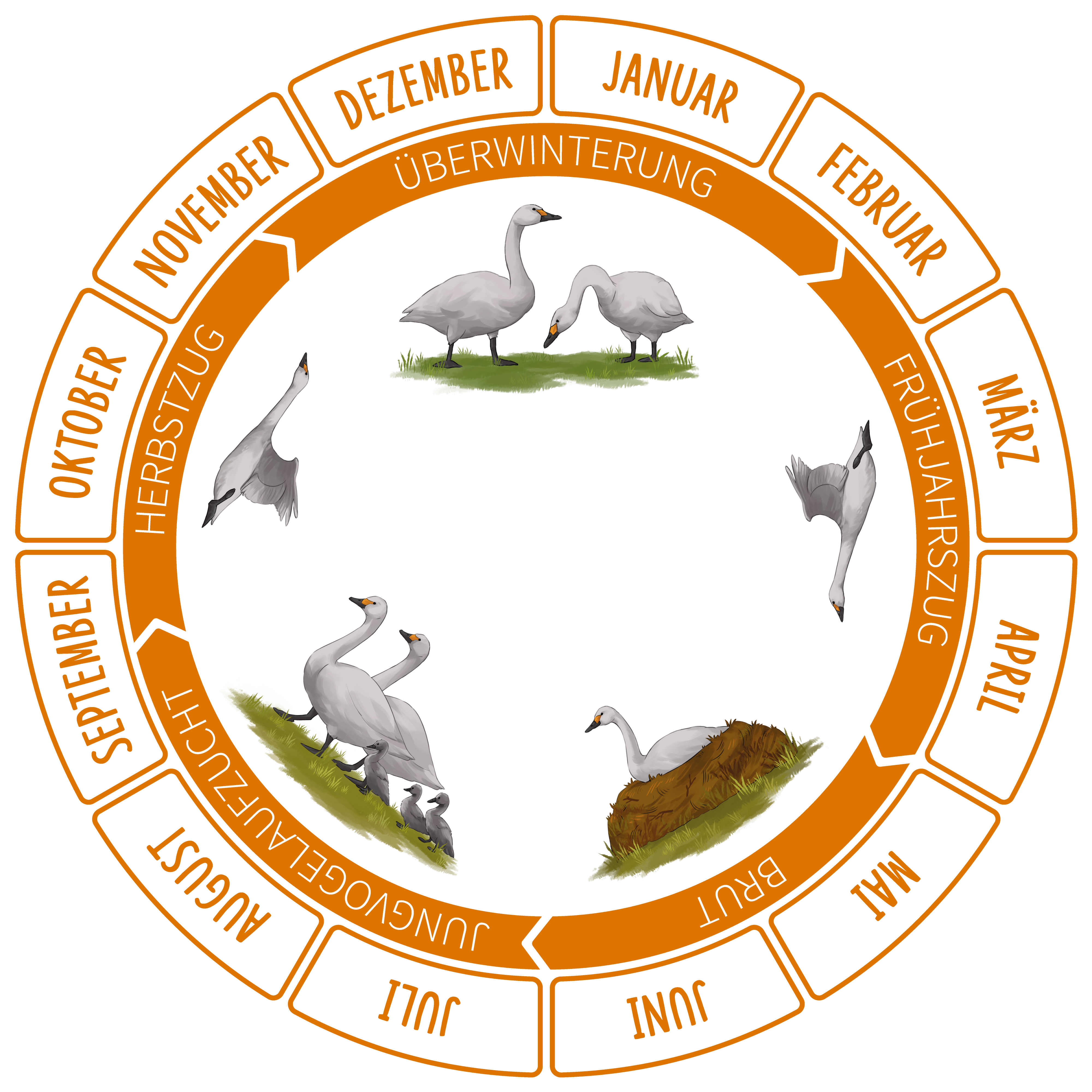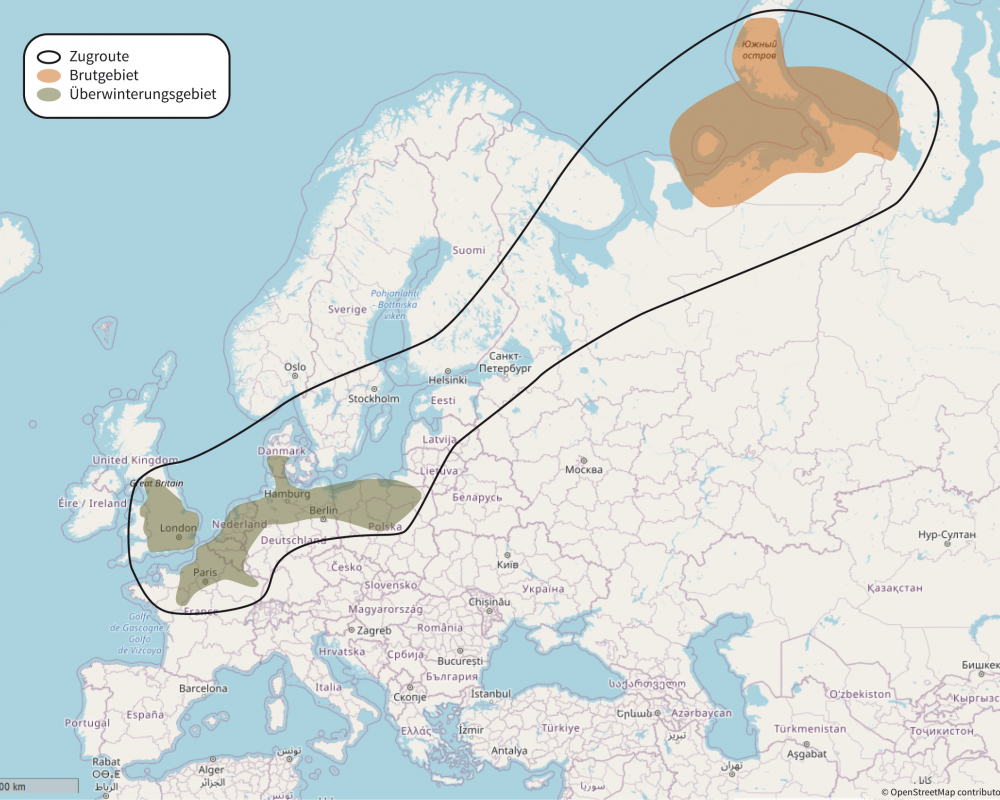Profile
Zwergschwan (dt.)
Bewick’s Swan (engl.)
Kleine Zwaan (niederl.)
Pibesvane (dän.)
Cygnus columbianus bewickii (wiss.)
Smallest swan in Europe, white plumage, black-yellow bill coloring, with distinct black above the nostril
Body length: 115-127 cm, Average weight: 6 kg
Approximately 10 years, breeding at 3-4 years of age
© Jan Sohler
Northwest European population: approximately 12,900 individuals (population estimate 2020); declining trend: in 1995, there were approximately 29,000 individuals.
- Classified as “vulnerable” on the European Bird Red List
- Listed in Annex 1 of the EU Birds Directive as a particularly protected species
To be considered an internationally important country for a bird species, at least 1% of the total population should be present there. For our Bewick’s Swans, this would mean at least 1,800 individuals. Since approximately 50% of the northwest European population roost here, Germany is of particular importance for Bewick’s Swans.
Russian tundra east of the Kanin Peninsula extending to the Ural Mountains and Novaya Zemlya.
Incubation: mid-May to mid-July
Rearing of juveniles: mid-July to September
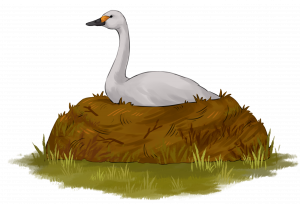
3-5 eggs
Autumn migration: approximately October to mid-November
Wintering: approximately mid-November to February
Spring migration: approximately March to May
From breeding grounds via the White Sea towards the Baltic Sea, along Estonia and Latvia towards Germany, possibly from there further to other wintering areas.
Germany, Netherlands, United Kingdom, Denmark, Belgium, France
Wintering Numbers in Germany: approximately 10,000 individuals (mainly in Schleswig-Holstein, Lower Saxony, and Mecklenburg-Western Pomerania)
Families migrate together to the wintering area and stay together during the winter. The offspring from the previous year often rejoin their parents in the wintering area. Older individuals without offspring migrate together with their partners. Occasionally, older siblings without partners find each other in the wintering area.
Until mid-January, Bewick’s Swans mainly inhabit arable land. Here, they search for carbohydrate-rich food such as maize, which can provide quick energy. From February onwards, particularly protein-rich grasses are consumed in (wet) grasslands, which provide important reserves for flight muscles and breeding (e.g., for egg production). At night, Bewick’s Swans use quiet waters where they are protected from predators.
- BirdLife International (2015). European Red List of Birds. Office for Official Publications of the European Communities, Luxembourg.
- European Union. (n.d.). Bewick’s Swan (Cygnus bewickii). Environment – European Commission. https://ec.europa.eu/environment/nature/conservation/wildbirds/threatened/c/cygnus_bewickii_en.htm
- Nagy, S.; Petkov, N.; Rees, E.C.; Solokha, A.; Hilton, G.; Beekman, J.; Nolet, B. (2012). International Single Species Action Plan for the Northwest European Population of Bewick’s Swan (Cygnus columbianus bewickii). AEWA Technical Series No. 44. Bonn, Germany. http://www.unep-aewa.org/sites/default/files/publication/ts44_ssap_bewicks_swan.pdf
- Wildfowl and Wetland Trust WWT (n.d.). Bewick’s Swan. https://www.wwt.org.uk/discover-wetlands/wetland-wildlife/swans/uk-migratory-swan-species/bewicks-swan/
- Wetlands International (2022). Waterbird Population Estimates. wpe.wetlands.org
- Rees, E. (2006). The Bewick’s Swan. UK: T. & A.D. Poyser, London
- Rees, E. C.; Beekman, J. H. (2010). Northwest European Bewick’s Swans: a population in decline. British Birds 103: 640– 650.
- Robinson, R.A. (2005) BirdFacts: profiles of birds occurring in Britain & Ireland. BTO, Thetford. http://www.bto.org/birdfacts

